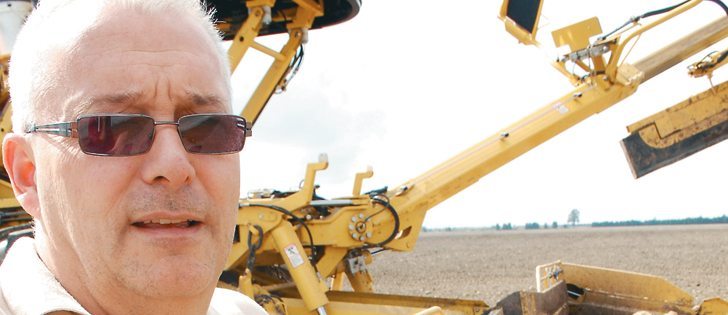At today’s nitrogen prices, a five percent loss of anhydrous ammonia is a hard pill to swallow.
Work by agricultural engineer Mark Hanna at Iowa State University has shown that some applicators are better at anhydrous ammonia retention than others over a range of soil conditions.
Shank-type units tend to lose less anhydrous ammonia than coulter designs.
That research indicated that while a shank-style applicator might lose 1.6 percent of the anhydrous within a 24-hour period a recent model coulter style applicator could result in the soil giving up 4.8 percent of the ammonia.
Read Also

Trade war may create Canadian economic opportunities
Canada’s current tariff woes could open chances for long-term economic growth and a stronger Canadian economy, consultant says — It’s happened before.
Case IH uses the knife strategy combined with a coulter and sealing discs to close the soil after application in its new Nutri-Placer 940.
Case says it developed the 940 to not only do better at retaining anhydrous ammonia, but to also give producers an applicator that works in a wider range of soil and weather conditions, according to Rob Zemenchik, marketing manager for tillage tools at Case.
“The Nutri-Placer 940 can apply anhydrous to fields when operators need to, with wide operating windows, not just when field conditions are favourable,” he said.
With widths of 50, 60 and 65 feet, Zemenchik said the 940 is the biggest anhydrous application tool on the market.
The machine is compatible with dry bulk fill systems for root-zone banding, as well as variable applications of phosphorus and potassium fertilizers.
Keeping an applicator above ground in muddy conditions is always an issue.
To meet the challenge, Case engineers put 12 wheels under the 50 to 65 foot models.
All models have four large flotation tires on a walking tandem supporting the main frame in field and transit positions.
The Class V hitch matches the capacity of the biggest high horsepower tractors available. It has a nar-profile, T-bone design to allow a tight turning radius for track or wheeled tractors.
From the T-Bone front hitch, the centre frame members and rear hitch are bundled in a straight-through design, so the pulling points align with each other, whether it’s front hitch to tractor or rear hitch to the tank. This results in less lateral stress and overall loading of the entire middle frame.
The rear hitch has a tow capacity of 25,000 pounds, with heavy-duty tubing and nylon skid plates. It’s equipped for single or double product hook-ups.
The high clearance shank option is designed for soils with rocks and other obstructions, but also works well in rock-free soil. It allows for adjustable holding pressure, maintaining depth with either 850 or 1,250 pounds of trip force.
The 940 comes standard with 30-inch centres, but can be ordered on 15-inch centres. The 30-inch centres can accommodate 24 shanks with coulters on the 60-foot model and 26 shanks with coulters on the 65-foot model.
The optional 15-inch centres can accommodate 47 shanks without coulters on the 60-foot model and 51 shanks without coulters on the 65-foot model.
The applicator features a five-section field flex and seven-section fold frame design for good ground contouring and easy folding. While operating in the field, the frame weight is evenly distributed across the width of the machine.
“The modularity of the Nutri-Placer 940 is especially ideal for fleet operations. These modular wing sections can fold up on the same platform, so size and settings can be customized to match the tractor being used, not the other way around,” says Zemenchik.
With modular wing sections, farmers have the flexibility to match machine widths of 50, 60, or 65 feet to the appropriate tractor horsepower and field size.
When folded for transport, the Nutri-Placer 940 is 13 feet, nine inches tall and 18 feet, nine inches wide, just slightly wider than a four-wheel drive tractor with duals.
The Nutri-Placer 940 maintains high under-frame clearance and distance between coulters and knives for better residue flow in high-yield environments.
Heavy frame flow tubing runs the length of the frame, giving it more strength while making it possible to stagger additional coulters and row units for better residue clearance.
“Think about the last time you entered a newly combined field to apply anhydrous,” said Zemenchik.
“Operators often have to contend with constantly backing up and digging out because of cornstalks jamming up machines.
Due to the high under-frame and the distance between the front coulters and rear shanks, the residue and debris will flow better.”
Reinforced wing pivots with nongreasable poly bushings should extend the life of the unit and reduce service time. A handheld turnbuckle adjusts the depth settings on a single-point depth control.
In the research and development stage, Case conducted a detailed stress analysis that measured joints throughout the frame.
As a result, extension gussets reinforce the frame, increasing the strength of the toolbar and providing a longer toolbar life.















